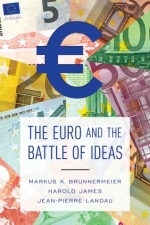Gaz Coombes recommended Here Come the Warm Jets by Brian Eno in Music (curated)
LoganCrews (2861 KP) rated The Dreamers (2003) in Movies
Dec 3, 2020 (Updated Dec 3, 2020)
"𝘐 𝘥𝘰𝘯'𝘵 𝘣𝘦𝘭𝘪𝘦𝘷𝘦 𝘪𝘯 𝘎𝘰𝘥. 𝘉𝘶𝘵 𝘪𝘧 𝘐 𝘥𝘪𝘥, 𝘩𝘦 𝘸𝘰𝘶𝘭𝘥 𝘣𝘦 𝘢 𝘣𝘭𝘢𝘤𝘬, 𝘭𝘦𝘧𝘵-𝘩𝘢𝘯𝘥𝘦𝘥 𝘨𝘶𝘪𝘵𝘢𝘳𝘪𝘴𝘵."
"𝘐'𝘮 𝘵𝘰𝘰 𝘸𝘦𝘵 𝘵𝘰 𝘢𝘯𝘴𝘸𝘦𝘳 [𝘵𝘩𝘦 𝘱𝘩𝘰𝘯𝘦]."
"𝘠𝘰𝘶'𝘳𝘦 𝘢 𝘣𝘪𝘨 𝘮𝘰𝘷𝘪𝘦 𝘣𝘶𝘧𝘧, 𝘳𝘪𝘨𝘩𝘵? 𝘛𝘩𝘦𝘯 𝘸𝘩𝘺 𝘥𝘰𝘯'𝘵 𝘺𝘰𝘶 𝘵𝘩𝘪𝘯𝘬 𝘰𝘧 𝘔𝘢𝘰 𝘢𝘴 𝘢 𝘨𝘳𝘦𝘢𝘵 𝘥𝘪𝘳𝘦𝘤𝘵𝘰𝘳... 𝘮𝘢𝘬𝘪𝘯𝘨 𝘢 𝘮𝘰𝘷𝘪𝘦 𝘸𝘪𝘵𝘩 𝘢 𝘤𝘢𝘴𝘵 𝘰𝘧 𝘮𝘪𝘭𝘭𝘪𝘰𝘯𝘴."
The far less entertaining 𝘊𝘳𝘶𝘦𝘭 𝘐𝘯𝘵𝘦𝘯𝘵𝘪𝘰𝘯𝘴 meets... idek, the really long talky parts from 𝘛𝘦𝘵𝘳𝘰? A woeful experience - uses a ton of intellectual jargon but says next to nothing. On the one hand, perfectly emulates this sort of 20-something who thinks they're the most original being on the planet despite being another clichéd story no one wants to be around... but on the other, at what cost? These people seem beyond insufferable to be around - three pretentious, odious fucks sit around drinking wine and smoking while spewing superficial first-year-film-major histrionics, jerking off, and smelling each others' underwear. Every bit as lumbering, surface-level, and pompous as that sounds. Usually I'm all for these conceited combinations of toxic people, self-destruction, and explicit sex but this is virtual parody levels of this sort of "wants to be a 70s movie really bad" cinema. Has a few good scenes that actually find a palpable mood but otherwise exists almost solely to brag about how many old movies it's seen, uses both those aforementioned films and the real life 1968 Paris riots as not much more than mere window dressing while failing to confront whatever shred of an idea it briefly poses for a scene or two. Eva Green and the dad are the only two tolerable performances. All but begs you to find it audacious and daring with a shit-eating sneer while simultaneously gutting the homosexuality from the original text so this won't steer *too* far off the hetero curve. And then it ends with a total "who cares?". Pretty but dumb. The sex stuff is kind of decent, though.

ICBC Mobile Banking
Finance
App
ICBC Mobile Banking offers you a comprehensive range of finanical and securities services, including...

Marie Claire Magazine US
Lifestyle and Magazines & Newspapers
App
Subscribe now and get INSTANT access to the latest issue! Oscar-winning actress Emma Stone slips...

Airport Pro (All Airports) Flight Tracker
Travel and Utilities
App
Flight Tracker Premium. Packing List. Includes all airports in the world. For every airport (2500+)...

WiFi Map Pro - Free Internet
Travel and Social Networking
App
Get WiFi passwords for FREE internet access all over the world! Useful for TRAVEL! Works offline. ...

Bloomy: Dating Messenger App
Dating and Social Networking
App
Download Bloomy and enter a world of love and attention from thousands of beautiful women and single...

The Euro and the Battle of Ideas
Markus Brunnermeier, Harold James and Jean-Pierre Landau
Book
Why is Europe's great monetary endeavor, the Euro, in trouble? A string of economic difficulties in...
Politics International Affairs Economics



